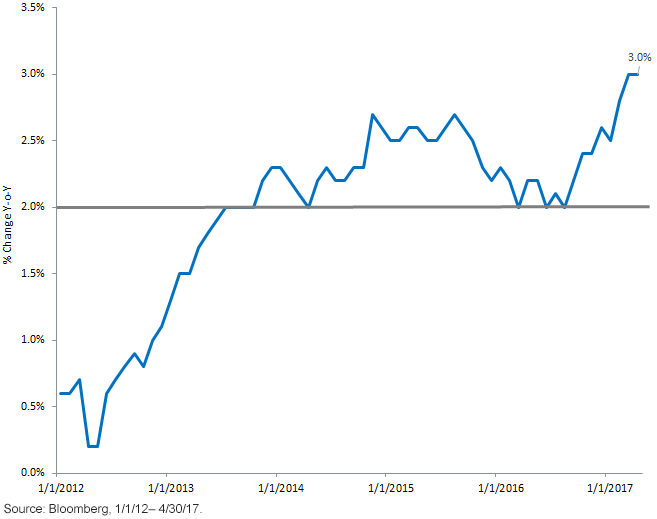Homegrown Strength: Japan’s Capex Cycle Accelerates


Good news: the latest forward-looking surveys suggest a sharp pickup in domestic business investment, set to rise 13.7% in the new fiscal year that ends in March 2018 (after a 3.8% drop in the year that ended March 2016). The 13.7% rise in domestic capex is the first double-digit growth in over four years. At the same time, overseas investment is set to rise 26.5%, a big recovery from the 12.7% contraction reported in the last fiscal year.1 Make no mistake: “Japan Inc.” has rediscovered its “animal spirits.”2
For investors, the coming upturn in for-growth capital spending has several implications.
First, Japan’s domestic demand cycle is likely to accelerate, which, before long, could boost industrial sector profit forecasts. Small- and mid-cap companies are likely to benefit most. However, given that the sharp rebound in Japan’s overseas investment appears to be coinciding with an accelerating U.S. capex cycle, large-cap machinery makers and capital goods companies could also be in for positive profit surprises. In a nutshell, Japan’s capital goods sector could show both domestic- and export-led growth.
Second, Japan’s financials in general, and banks in particular, are likely to experience positive earnings surprises because of rising demand for loans. As corporate demand for productive capital rises, so should demand for financial capital. The bullish capex intentions imply a likely releveraging. Note that loan growth has already begun to recover, rising 3% in April 2017 after a cyclical downturn throughout most of last year (see chart below). If, as we suspect, the visibility of the releveraging cycle begins to rise in the next three to four months, Japanese banks and financials could experience relative outperformance, in our view.
Third, the newfound Japan investment cycle will, before long, begin to bring upward revisions to the potential growth rate. Though this is a highly complex and almost ideological debate among academics and central bankers, the implications for market practitioners are relatively straightforward: the stronger Japan’s capex boom, the lower the risk of a premature monetary tightening from the BoJ. If, as we suspect, Japanese domestic service providers begin to deepen their capital stock and upgrade to the latest technologies, it is perfectly possible to see both a rise in service sector profitability and lower prices. For example, if Japanese banks can translate their current big investments in blockchain technology into streamlined back- and mid-offices, they should be able to offer better and lower-cost services to their customers while at the same time seeing higher margins.
For analysts and economists, it will take time to verify or falsify this “Goldilocks”3 thesis of Japan’s coming productivity boom. Debate and positioning among real-world investors is likely to pick up from here, in our view. Markets live on the debate of whether capex is return-enhancing or not. The good news in Japan is that, yes, the new capex cycle marks the starting gun for a livelier debate coming, in our view. Japan’s financial market metabolism is ready to rise.
Japan Bank Lending (1/1/12–4/30/17)

1Source: “Japan Capex Growth Rebounds to Post-Crisis High,” Nikkei Asian Review, 5/27/17.
Important Risks Related to this Article
Investments focused in Japan increase the impact of events and developments associated with the region, which can adversely affect performance.

